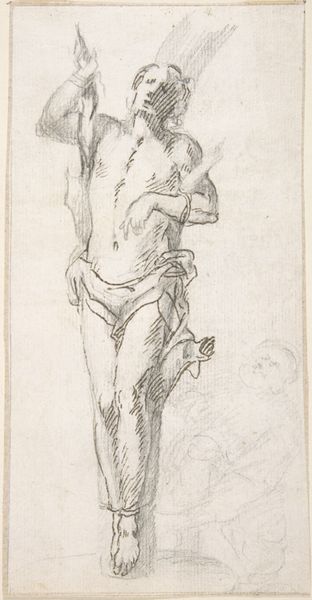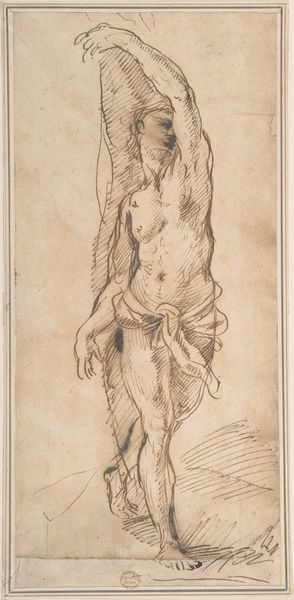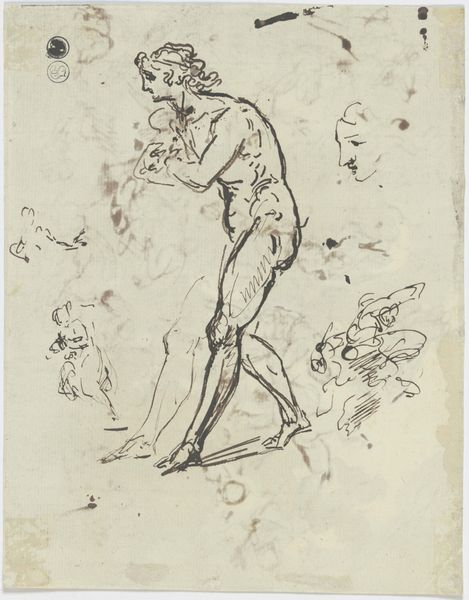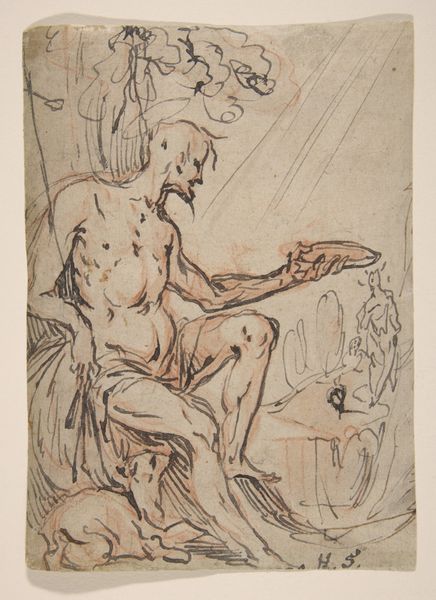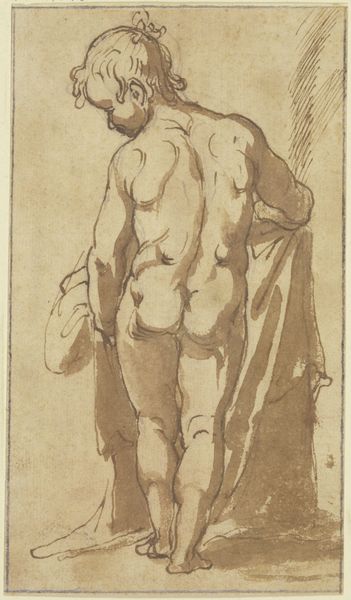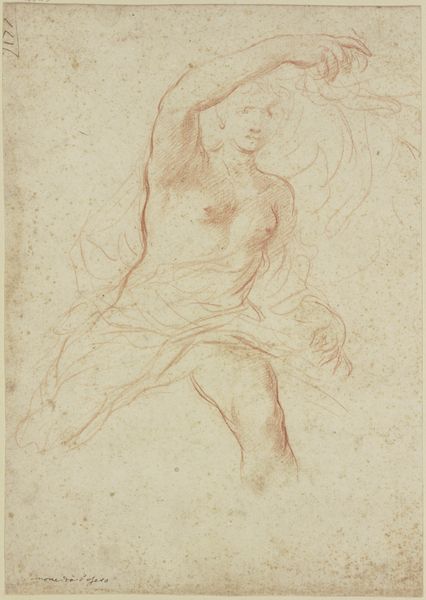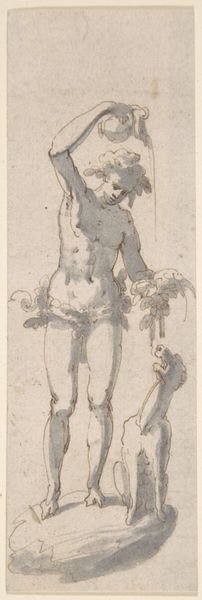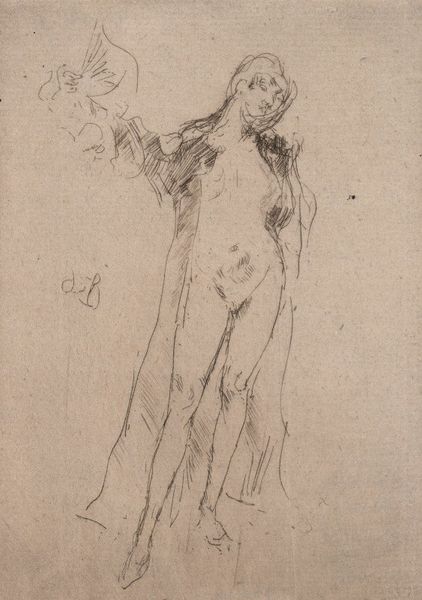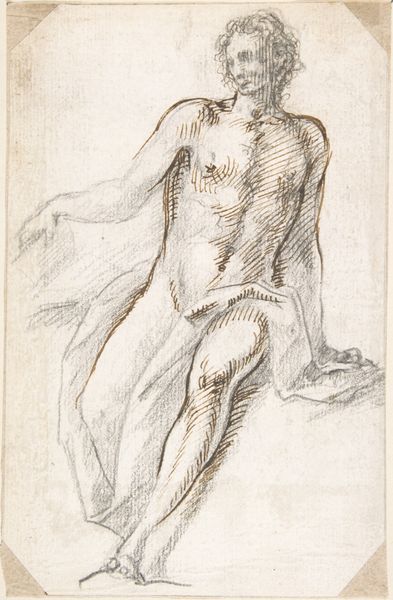
Standing Nude Female and Putto with Studies of a Hand and an Arm (recto); Satyrs destroying a Female Herm (verso) 1500 - 1600
0:00
0:00
drawing, pencil
#
drawing
#
figuration
#
form
#
11_renaissance
#
female-nude
#
pencil
#
line
#
italian-renaissance
#
nude
Dimensions: 9-3/8 x 6-9/16 in. (23.8 x 16.7 cm)
Copyright: Public Domain
Editor: Here we have a pencil drawing, "Standing Nude Female and Putto with Studies of a Hand and an Arm", made sometime between 1500 and 1600 by an anonymous artist. It has a very delicate, almost ephemeral quality. What do you see in this piece? Curator: This drawing is fascinating because it reveals a tension inherent in the Renaissance between classical ideals and the lived realities of the time. The idealized female nude, a clear nod to classical antiquity, is juxtaposed with a putto, a cherubic figure, both common motifs. But consider *who* these images were *for* and *who* they excluded. How do you think this idealised form relates to the power structures of the time? Editor: I suppose it reinforces them. These images are very... white. They don't represent a diverse range of people or experiences. Curator: Exactly! The classical ideal, as presented here, was largely a tool for the elite, solidifying notions of beauty and power. The figures are decontextualized and seem to float in a void, devoid of social reality. Do you notice the studies of the hand and arm? Editor: Yes, they are at the top of the frame. Was it common to draw like this back then, doing a hand study and attaching it to a body? Curator: Absolutely. It's likely a workshop practice or a study of classical form and part of an art-making education. The very *act* of creating these studies reinforces a hierarchy, not only of the human body, but also between artist and model, patron and artist, viewer and art. The drawing is about representation but also about who has the *power* to represent. Editor: That's a perspective I hadn't considered. So, while seemingly beautiful and classical, it is really upholding particular power structures. I will definitely remember that next time I look at similar work. Curator: And that critical eye allows us to engage with the work in a way that acknowledges its complexities and its potential to inform contemporary conversations about representation.
Comments
No comments
Be the first to comment and join the conversation on the ultimate creative platform.

